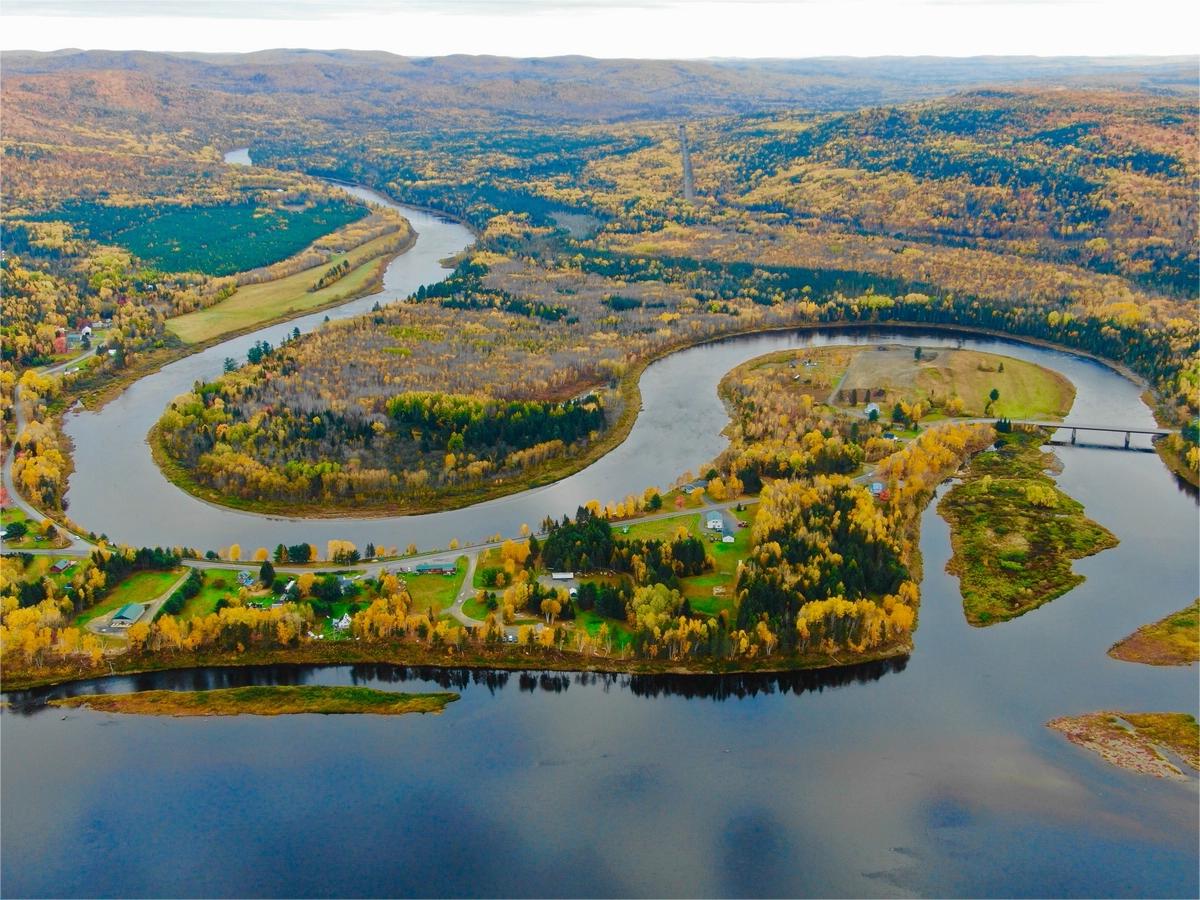Secrets Of Maine’s Allagash River Logging Camps

Have you ever wondered what life was like for loggers in the early 1900s? Maine's Allagash River logging camps offer a fascinating glimpse into this rugged lifestyle. These camps were bustling hubs of activity, where men worked tirelessly to harvest timber. The Allagash River served as a vital transportation route, carrying logs downstream to mills. Today, you can visit these historic sites and imagine the daily grind of those who lived and worked there. From the rustic cabins to the towering pines, every corner of the Allagash River logging camps tells a story of hard work, camaraderie, and survival in the wilderness.
Discover the Historic Allagash River Logging Camps
Maine's Allagash River is a treasure trove of history, especially when it comes to logging camps. These camps, once bustling with activity, now stand as silent witnesses to a bygone era. Let's take a journey through some of the most fascinating logging camps along the Allagash River.
1. Churchill Depot
Churchill Depot served as a major hub for the logging industry. Located near the confluence of the Allagash and Churchill Rivers, this camp was a bustling center of activity. Today, visitors can explore the remnants of the old buildings and imagine the hard work that took place here.
- Historical Significance: Churchill Depot was a key location for loggers transporting timber.
- What to See: Old bunkhouses, a blacksmith shop, and the remains of a dam.
2. Bissonette Bridge Camp
Bissonette Bridge Camp offers a glimpse into the daily lives of loggers. This camp, situated near a historic bridge, was essential for transporting logs across the river. The bridge itself is a marvel of early engineering.
- Historical Significance: The bridge was crucial for moving logs efficiently.
- What to See: The bridge, old camp structures, and scenic river views.
3. Umsaskis Lake Camp
Umsaskis Lake Camp is nestled by the serene Umsaskis Lake. This camp was a favorite among loggers for its picturesque setting and abundant resources. The lake provided a natural route for floating logs downstream.
- Historical Significance: Umsaskis Lake was a key waterway for log transportation.
- What to See: Remnants of the camp, beautiful lake views, and wildlife.
4. Round Pond Camp
Round Pond Camp is another gem along the Allagash River. This camp was strategically located near Round Pond, making it an ideal spot for loggers to rest and refuel. The pond itself is a tranquil spot, perfect for reflection.
- Historical Significance: Round Pond was a crucial rest stop for loggers.
- What to See: Old camp ruins, the peaceful pond, and surrounding forest.
5. Michaud Farm
Michaud Farm stands out as a unique logging camp. Unlike other camps, Michaud Farm was a self-sustaining community with its own farm. Loggers here not only worked hard but also grew their own food, creating a tight-knit community.
- Historical Significance: Michaud Farm was a self-sustaining logging camp.
- What to See: Farm remnants, old machinery, and community buildings.
6. Eagle Lake Tramway
Eagle Lake Tramway is a fascinating piece of logging history. This tramway was used to transport logs between Eagle Lake and Chamberlain Lake. The ingenuity of this system is a testament to the resourcefulness of early loggers.
- Historical Significance: The tramway was an innovative solution for log transportation.
- What to See: The tramway remnants, Eagle Lake, and interpretive signs.
7. Telos Dam Camp
Telos Dam Camp played a crucial role in controlling water levels for log driving. The dam itself is an impressive structure, showcasing the engineering skills of the time. This camp was vital for ensuring logs could be floated downstream efficiently.
- Historical Significance: Telos Dam was essential for water management in logging.
- What to See: The dam, old camp structures, and interpretive displays.
8. Chamberlain Farm
Chamberlain Farm is another unique logging camp with a rich history. This camp was known for its agricultural activities, providing fresh produce for loggers. The farm's location near Chamberlain Lake made it an ideal spot for both logging and farming.
- Historical Significance: Chamberlain Farm combined logging with agriculture.
- What to See: Farm remnants, lake views, and wildlife.
9. Smith Brook Camp
Smith Brook Camp is a lesser-known but equally fascinating logging camp. Located near Smith Brook, this camp was a quiet retreat for loggers. The brook provided a steady water supply, making it a perfect spot for a logging camp.
- Historical Significance: Smith Brook was a reliable water source for loggers.
- What to See: Camp ruins, the brook, and surrounding forest.
10. Allagash Falls Camp
Allagash Falls Camp is a must-visit for anyone interested in logging history. The camp is located near the stunning Allagash Falls, a natural wonder that provided both beauty and a challenge for loggers. The falls were a significant obstacle, requiring ingenuity to navigate.
- Historical Significance: Allagash Falls was a major challenge for loggers.
- What to See: The falls, camp remnants, and interpretive signs.
Embracing the Allagash River's Legacy
Maine's Allagash River logging camps offer a unique glimpse into the past. These camps, once bustling with loggers, now stand as silent witnesses to a bygone era. Exploring these historic sites, you can almost hear the echoes of axes and feel the rugged spirit of the loggers who lived and worked there. The Allagash River itself, with its pristine waters and stunning landscapes, adds to the magic of the experience. Whether you're paddling down the river or hiking through the woods, the sense of history is palpable. Visiting these camps is not just a trip into the wilderness; it's a journey back in time. It’s a chance to connect with the hard-working individuals who helped shape Maine's history. So, pack your bags, grab a paddle, and immerse yourself in the rich heritage of the Allagash River logging camps.

